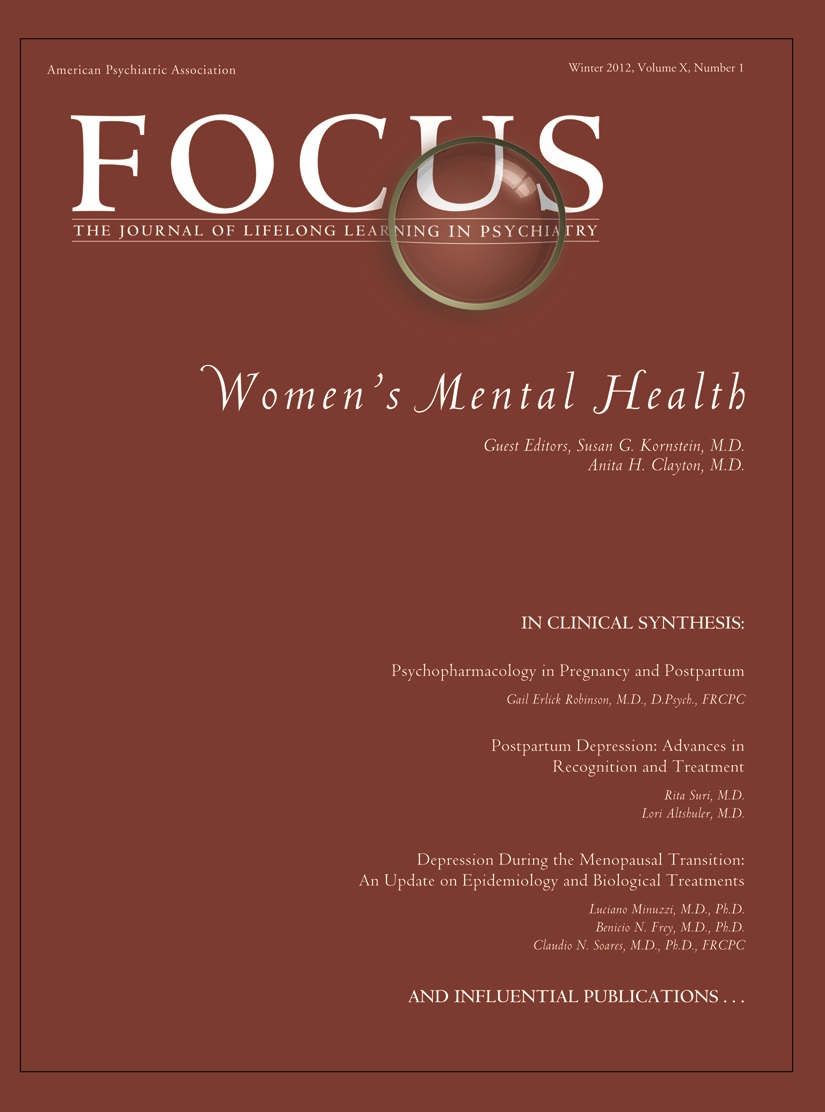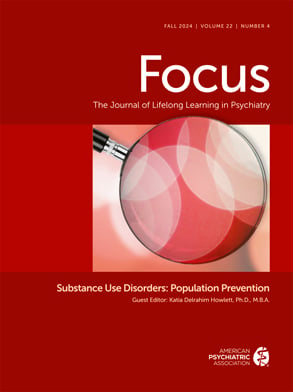I have a patient who has had recurrent depression whose condition is stable with an SSRI but wants to get pregnant. Should she continue to take her antidepressant?
Your question embodies the fundamental clinical decision in managing depression during pregnancy. Yet, it is a question that cannot be satisfactorily addressed until a series of even more elemental questions are answered. In the following discussion, we delineate these underlying issues and thereby elucidate the clinical decision-making process during pregnancy.
What is your primary clinical objective? You must first confront this issue because it guides all subsequent decisions. You have two options: 1) safeguard maternal well-being or 2) protect the fetus. In our experience, your primary objective should be to protect the fetus because this respects usual maternal preference and provides a framework that avoids pitting mother versus child in the decision-making process.
If your goal is to safeguard maternal well-being, then even the slightest risk to the child posed by treatment invites maternal self-recrimination. However, if your primary goal is to protect the fetus, then you invite the mother to make decisions with her child's interests in mind, thereby fostering the maternal-infant bond.
Are antidepressants safe during pregnancy? This is how patients often pose the question, and, so, it may need to be addressed in these terms. The appropriate answer is “No.” There is no antidepressant whose pregnancy risks have been fully explored. Avoid offering your patient false reassurances that antidepressants pose no risk to a baby. Instead, show your patient that she is asking the wrong question. The proper question is not whether antidepressants are safe during pregnancy; they are not. The appropriate question is whether it's safer for her baby to continue or discontinue her antidepressant.
How helpful are FDA pregnancy categories? Unfortunately, in their current form, FDA pregnancy ratings may be more meaningful medicolegally than clinically. The apparent five-category system is ostensibly a two-category system. All antidepressants are rated either C or D. Often overlooked is the fact that there are few data to buttress the ratings of newer medications. Thus, today's newly introduced category C antidepressant may be tomorrow's category D antidepressant. You cannot assume that all medications within a given category are equally safe, nor is a new category C agent necessarily safer than an older well-established category D agent.
How likely is a recurrence of depression during pregnancy? There is no evidence to indicate that pregnancy protects women from recurrences of depression. In a study of pregnant women with histories of depression, 68% of those discontinuing antidepressants had a relapse, whereas only 25% of those continuing treatment had a relapse (
1). In this case, your patient, who has a history of recurrent depression, will probably have a relapse without treatment.
Can your patient's depression be successfully treated without antidepressants? Psychotherapy, light therapy, and even repetitive transcranial magnetic stimulation are potential treatments for depression that do not entail fetal exposure to a medication. If your patient has access to such treatments, is motivated to use them, and finds them effective, then they are certainly worthy of consideration. However, you should not assume that fetal exposure to herbal remedies (e.g., hypericum) is safe.
Does depression affect the baby? Yes it does. Depressed pregnant women are less compliant with obstetrical care, they use more hypnotics, opiates, tobacco, alcohol, and illicit substances, and their children have higher rates of preterm birth, low birth weight, neonatal intensive care unit admission, and poor developmental outcomes [for a review, see Henry et al. (
2)]. However, the level of severity of depression necessary to increase risks for these poor outcomes remains unclear. In the absence of concrete data, it is commonly assumed that moderate to severe episodes of depression convey risk to an unborn child. Do not overlook the fact that maternal depression can also affect older siblings.
Do SSRIs cause birth defects? The 2.6% overall selective serotonin reuptake inhibitor (SSRI) malformation rate among more than 14,000 pregnancies is reassuringly consistent with general population rates [cf. Newport and Stowe (
3)]. However, some concerns have been raised, particularly for paroxetine (
4). Unfortunately, inconsistent quality in the research data hampers interpretation. For example, a recent report that SSRIs were not associated with increases in overall defects but that certain SSRIs were associated with particular defects (
5) failed to control for multiple testing in a set of approximately 60 analyses, thus calling into question the findings. At present, it can best be said that SSRI exposure does not appear to increase the overall rate of malformations and no consistent pattern of any particular malformation has emerged, with the possible exception of paroxetine and cardiac defects.
Do SSRIs cause miscarriage and low birth weight? Data on the impact of prenatal antidepressant exposure on rates of miscarriage, preterm delivery, and low birth weight are decidedly mixed [cf. Newport and Stowe (3)]. The answer to this question is further complicated by yet other studies linking maternal depression with prematurity and low birth weight. This question remains unanswered.
Do SSRIs cause newborn complications? SSRI exposure before delivery is associated with transient neonatal symptoms, particularly respiratory difficulty and jitteriness. In our experience, this affects approximately one-half of exposed newborns but is a mild syndrome that only requires brief supportive care (e.g., blow-by oxygen).
Of greater concern are reports linking SSRIs with persistent pulmonary hypertension of the newborn (PPHN). PPHN is a life-threatening condition invariably requiring neonatal intensive care unit admission. The best study to date, encompassing more than 800,000 newborns, indicates that the PPHN risk is modestly increased by SSRI exposure from a baseline of approximately 1 in 2,000 to approximately 1 in 600 newborns (
6).
Does prenatal SSRI exposure affect child development? It is clear that antidepressants cross the placenta, enter the fetal circulation, and (at least in laboratory animals) enter the fetal brain (
7). Therefore, the impact of antidepressants on fetal brain development is a valid concern. Fortunately, numerous studies of cognitive, language, and motor development comparing children up to 7 years old with or without prenatal antidepressant exposure have been reassuring (
3).
A recent study, however, reported that prenatal SSRI exposure was associated with childhood autism (
8). However, upon closer inspection, this report may reveal more about the shortcomings of perinatal research than the risk for autism. In this case-control study of a managed care database, the mothers of the children with autism were slightly older (1.5 years), were more likely to be white, and were better educated. These demographic differences suggest that autism may be undiagnosed in certain subject groups, raising the specter of a misclassification bias that is not remedied by statistical control.
Should your patient continue to take her antidepressant? Having worked through the preceding questions, we return to your initial question. Should you treat her with an SSRI while she is pregnant? Despite the 1 in 600 risk for PPHN and lack of certainty regarding other risks potentially posed by fetal SSRI exposure, it is our opinion that the risks to an unborn child posed by moderate to severe maternal depression probably supersede those posed by SSRI exposure. Bear in mind that advising your patient to discontinue SSRI therapy does not eliminate fetal exposure; it simply exchanges the risks of SSRI exposure for those of exposure to maternal depression. Consequently, serious consideration should be given to continuing SSRI therapy for a pregnant woman with a history of recurrent depression unless there is reason to believe that her depression can be successfully managed with a nonpsychotropic treatment modality.

